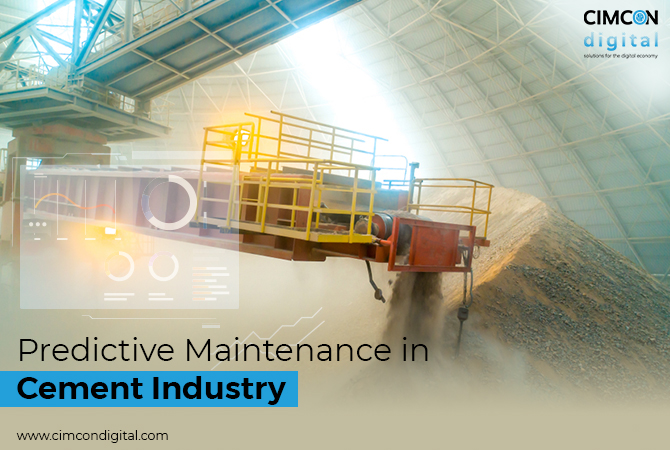
Recently, the cement industry has been making more cement than people are buying. This means that it’s important for cement plants to keep running without needing a lot of expensive repairs. Some older cement plants had problems with important parts like motors and equipment breaking down, which caused them to be out of operation for more than 30% of the time. The machines that grind and finish the cement were only working for about 80% and 70% of the time.
At the same time, maintenance work was taking up a lot of time and causing problems for cement manufacturers. They were losing production capacity, compromising quality, and spending more money on reliability. Predictive maintenance is a set of methods and tools that manufacturers now use to break free from this expensive cycle.
How does predictive maintenance work in cement manufacturing?
Predictive maintenance helps cement producers keep their machinery running smoothly and minimize costs. It uses devices, sensors, and advanced technologies like AI and IIoT. Instead of waiting for something to break or following a set schedule for maintenance, predictive maintenance uses sensors placed on machines to monitor their performance. If a critical issue is detected, it is logged and analyzed using machine learning algorithms. Predictive maintenance also involves a team that uses this information to make decisions that benefit the business.
How to use technology to prevent problems in cement manufacturing?
AI for predicting maintenance:
AI acts as the “brain” of a predictive maintenance platform. This platform uses data from sensors to gather important information about a machine in real-time. Different approaches are used to predict how long the machine will keep working properly. Some systems classify potential faults or anomalies, while others focus on minimizing the difference between predicted and actual uptime. Overall, AI enables predictive maintenance systems to imitate human-like abilities, identify faults, and alert maintenance engineers about potential issues.
Internet of Things (IoT) for predictive maintenance:
Predictive maintenance systems use different sensors to collect data about things like temperature, humidity, vibrations, or even images and videos in real-time. This data is sent to data lakes where it’s processed and analyzed. These systems are like a network of devices called the Internet of Things, and they help with predicting when maintenance is needed. Cement manufacturers can benefit from these systems in many ways.
For example, a cement factory in North America used 5000 sensors and 50 computers to take care of their production machinery with only one operator.
Machine learning for predictive maintenance:
Machine learning is a part of artificial intelligence that helps find unusual data or tells algorithms how to behave based on results. For example, in reinforcement learning, an algorithm is rewarded when it accurately predicts vibrations in a kiln roller caused by misalignment or too much lubrication on the kiln shell. Machine learning algorithms analyze various factors like maintenance history, error logs, device information, and current environmental conditions to find abnormal behavior and try to figure out why it’s happening.

What benefits can you expect from using IoT for predictive maintenance?

Why every cement manufacturer should adopt IoT-based predictive maintenance?
Imagine you have a car. If you wait until it breaks down completely before fixing it, it will cost you a lot of money and time. But if you regularly check the car’s condition and fix any small issues before they become big problems, you can save money and avoid being stranded on the side of the road.
The same concept applies to cement manufacturing. In cement factories, there are many machines and equipment used to produce cement. These machines can break down or have problems if they are not properly maintained.
For example, let’s say there is a machine called a kiln in a cement factory. The kiln is responsible for heating the raw materials to produce cement. If the kiln fails unexpectedly, the entire production process would come to a halt, costing the company a lot of money in lost production and repairs.
However, with predictive maintenance, sensors, and data analysis can monitor the kiln’s temperature, vibration, and other important parameters. If the data shows that the kiln’s temperature is rising abnormally or its vibration is increasing, the maintenance team can be alerted to inspect the kiln and take preventive action before it fails.
Conclusion:
By implementing predictive maintenance strategies, cement manufacturers can reduce downtime, save money on repairs, and ensure smooth production. It’s like taking care of your car before it breaks down, but in this case, it’s taking care of expensive machinery to avoid costly disruptions in cement production.

